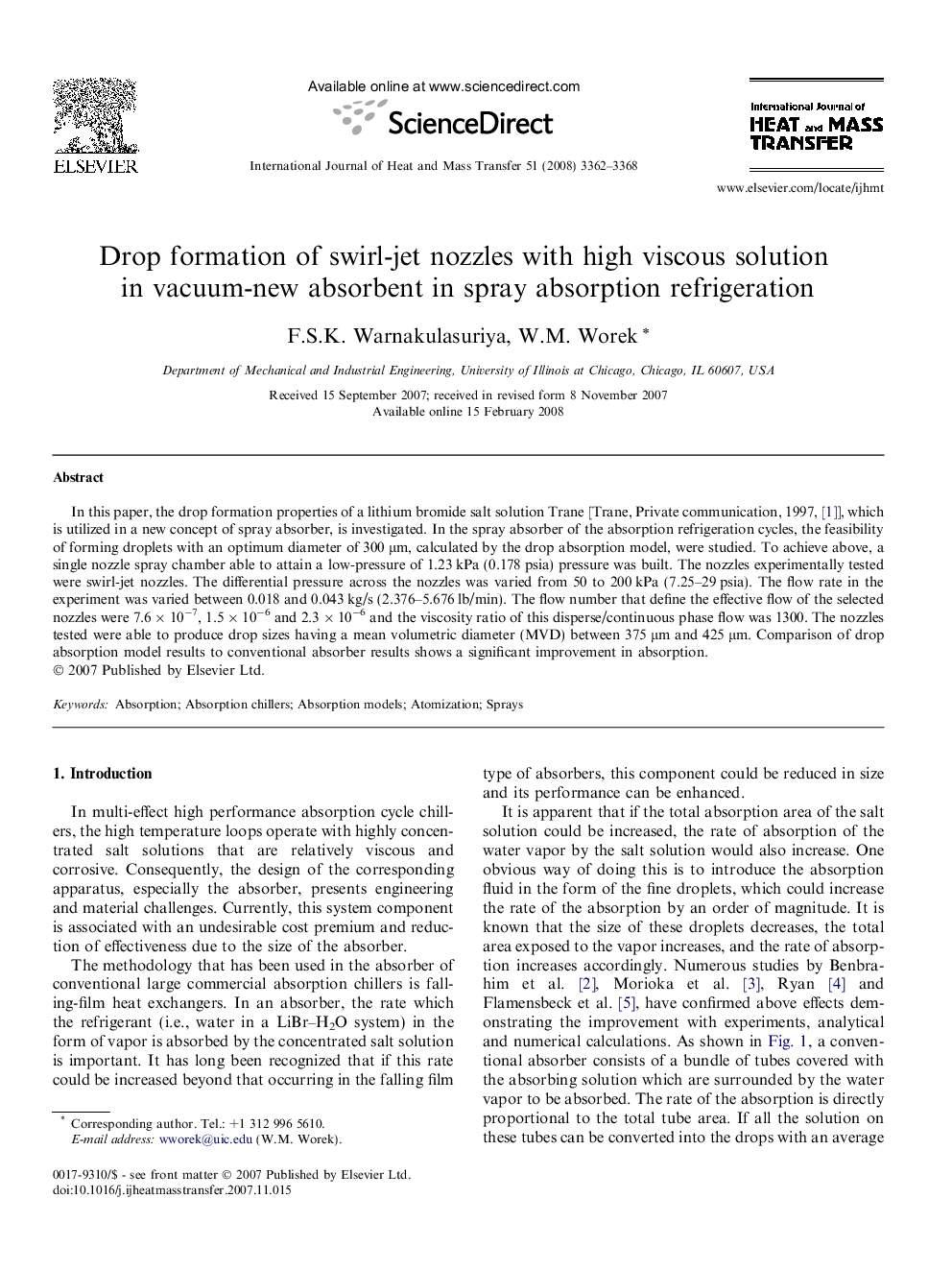| Article ID | Journal | Published Year | Pages | File Type |
|---|---|---|---|---|
| 660393 | International Journal of Heat and Mass Transfer | 2008 | 7 Pages |
In this paper, the drop formation properties of a lithium bromide salt solution Trane [Trane, Private communication, 1997, [1]], which is utilized in a new concept of spray absorber, is investigated. In the spray absorber of the absorption refrigeration cycles, the feasibility of forming droplets with an optimum diameter of 300 μm, calculated by the drop absorption model, were studied. To achieve above, a single nozzle spray chamber able to attain a low-pressure of 1.23 kPa (0.178 psia) pressure was built. The nozzles experimentally tested were swirl-jet nozzles. The differential pressure across the nozzles was varied from 50 to 200 kPa (7.25–29 psia). The flow rate in the experiment was varied between 0.018 and 0.043 kg/s (2.376–5.676 lb/min). The flow number that define the effective flow of the selected nozzles were 7.6 × 10−7, 1.5 × 10−6 and 2.3 × 10−6 and the viscosity ratio of this disperse/continuous phase flow was 1300. The nozzles tested were able to produce drop sizes having a mean volumetric diameter (MVD) between 375 μm and 425 μm. Comparison of drop absorption model results to conventional absorber results shows a significant improvement in absorption.
